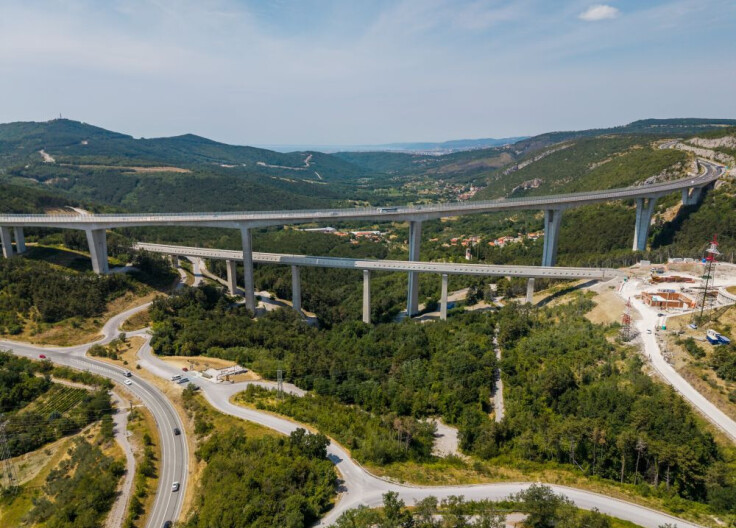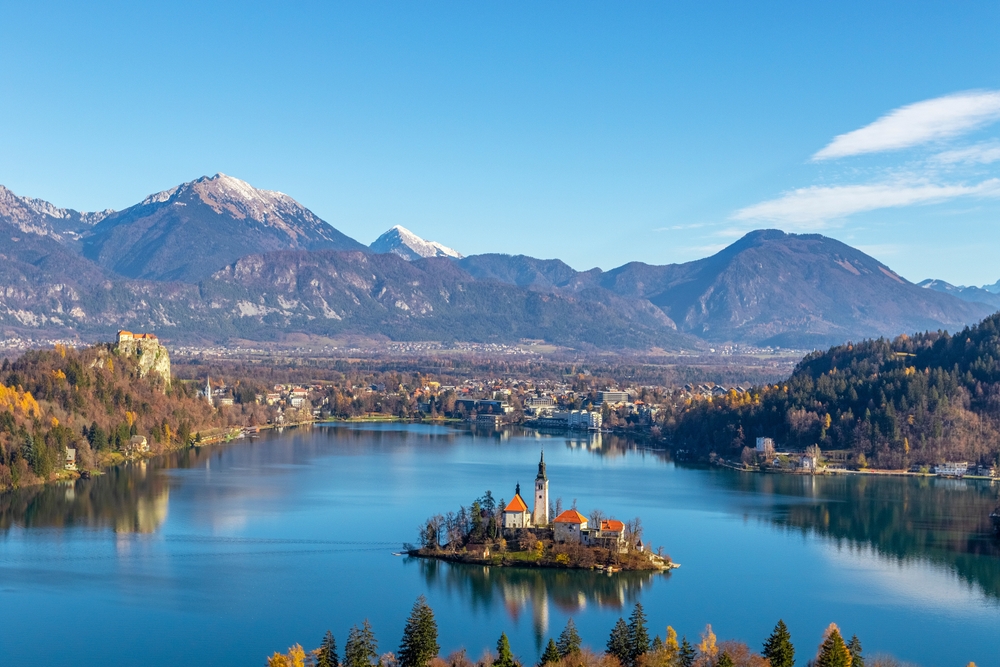It’s just under seven weeks until the Intelligent Rail Summit 2025 kicks off. This year’s edition themed ‘Climate-Proof Rail, Driven by Data’ will bring senior figures from Deutsche Bahn, CAF Digital, SNCF subsidiary Altametris and more to the stage on 4–5 November in Bled, Slovenia. Their focus: how to harness AI, predictive modelling and digital diagnostics to keep Europe’s railways running as climate change impact grows more severe.
Set against the dramatic backdrop of Lake Bled, the Intelligent Rail Summit ’25 arrives at a moment when climate resilience has become a defining challenge for the industry. And Slovenia itself is a reminder of what is at stake. In August 2023, torrential floods and landslides damaged around 75% of the national network, with repairs still ongoing two years later. That experience, combined with the country’s flagship Second Track project and billions in EU-backed recovery investments, makes Slovenia a live case study for climate-proofing infrastructure.
In the opening session of IRS25, Climate resilience: harnessing data to future-proof rail, Slovenia’s own infrastructure chief, Matjaž Kranjc, will sharie lessons from the 2023 floods that left three-quarters of the country’s railway underwater. It will also address how predictive modelling can help operators manage escalating risks. Deutsche Bahn’s Head of Algorithms Hannah Richta will reveal how the company’s AI-powered dispatching tool has already lifted punctuality in four German regions.
Emerging tech
From there, the spotlight focusses on emerging technologies to climate-proof rail. Alexis Meneses of SNCF’s Altametris will show how industrial-scale 3D data is transforming inspections, satellite monitoring with value.space. Slovenia’s Institute of Traffic and Transport will dive into the European Sunrise project, applying AI to spot structural risks earlier, while Swedish company Predge will present predictive models designed to anticipate maintenance needs before they escalate.
Value.Space will explain how satellite intelligence can be converted into usable rail data, and Austrian diagnostics specialist voestalpine will take participants behind the scenes of its modular checkpoint systems — already deployed across Slovenia — with a site visit to show sensor-based monitoring and fault detection in action.
 A voestalpine site visit is on the cards. © voestalpine
A voestalpine site visit is on the cards. © voestalpine
Data in freight will also feature on the programme. Rail Logistics Europe is set to present its MONITOR project, which replaces manual wagon safety checks with real-time digital monitoring. Other sessions will turn to robotics and AI in asset management, asking how experimental pilots can be scaled up into lasting, system-wide practice. Essentially, with AI dispatching, 3D digital twins, satellites and predictive maintenance converging in one programme, Intelligent Rail Summit ’25 offers a rare chance to see how Europe’s railways can shift from reacting to crises to preventing them.
Rrail institutions and tech firms are joined by operators and rolling stock manufacturers on stage to discuss the implementation of new technologies in 2 panel discussions, joined by CAF Digital’s Javier de la Cruz, Deutsche Bahn’s Hannah Richta, rail asset management Director Peter Boom of Royal Haskoning and SŽ-Infrastruktura’s Franc Koblučar.
Why Slovenia?
The scale of Slovenia’s own investments perhaps shows why the conversation matters so much now. Through its EU-funded Recovery and Resilience Plan, the country has already delivered five projects to expand railway capacity. These works have focused on heavily used corridors that suffered repeated flooding and erosion, with upgrades including modernised drainage, stronger foundations and capacity improvements that reduce vulnerability to future shocks. The projects included station renovations at Grosuplje, Domžale and Nova Gorica, and nearly 50 kilometres of upgraded track between Kranj–Jesenice and Ljubljana–Brezovica–Borovnica.
 Slovenia’s Second Track project is moving forward, and it is climate-conscious. © 2TDK/drugitir.si
Slovenia’s Second Track project is moving forward, and it is climate-conscious. © 2TDK/drugitir.si
Alongside them, the 27-kilometre Second Track from Divača to Koper — built with reinforced viaducts, advanced tunnelling and EU-backed safeguards — represents Slovenia’s most ambitious attempt yet to build resilience into a core European rail artery.
But as the programme in Bled will stress, hard engineering alone will not be enough. Reinforcements and upgraded assets will need to go hand in hand with predictive modelling, AI tools and smarter diagnostics if rail is to withstand a climate future of heavier rainfall, shifting soils and extreme weather events. That is why Intelligent Rail Summit ’25 brings the digital and the physical together, and why the lessons from Slovenia matter far beyond its borders.
With in-depth sessions tackling the most urgent challenges facing rail today, join us at Intelligent Rail Summit 2025 to gain practical insights, connect with leading experts, and help shape a climate-resilient future for Europe’s railways. Explore the full programme and secure your place now — registrations are officially open!

